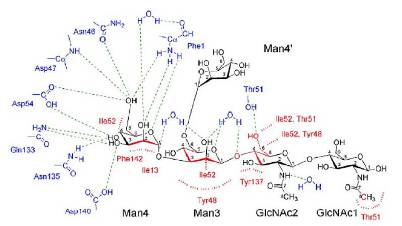Characterization of yeast cell wall
SUPERVISOR: Gunda KÖLLENSPERGER
Project assigned to: EVELYN RAMPLER
Background.
The yeast cell wall is an elastic structure determining the shape of the cell and providing osmotic and physical protection. The cell wall consists of an inner layer with β1,3-glucan and chitin responsible for the mechanical strength and an outer layer with glycosylated mannoproteins and a β1,6-glucan stabilisation element responsible for cell-cell interaction. The cell wall of yeast is more stable than normal cell walls due to the additional glycoprotein structure and polysaccharides are the major components of the cell wall. The two most abundant polysaccharides in Saccharomyces cerevisiae are α-D-mannan and β-D-glycan that make up to 90% of the cell wall dry weight.
These compounds have important properties to interact with the immune system and host (G. Kogan, A. Kocher, 2007). Yeast carbohydrate such as mannan oligosaccharides were found to have a positive influence on animals and humans health then added to the gut. There are no digestive enzymes for mannan oligosaccharides in the small intestine, therefore mannan oligosaccharides are intact in the large intestine after passing through it (Strickling et al, 2000) and can bind bacterial lectins by adhesion (Wellens et al, 2008).

The specific lectins of pathogens for mannose residues are the type-1 fimbriae. As adhesion is the reason for bacterial colonization in the gastrointestinal tract mannan oligosaccharides can be used for removal of pathogens by agglutination (K. Spearman, 2004). Therefore, yeast cell wall products are promising food supplements.
Aims and methods.
The aim of this work is to establish analytical workflows for yeast cell wall characterization. A range of yeast products such as whole cell or cell wall products will be tested using different analytical methods. The main compounds of the yeast cell wall are 1,3-glucan, 1,6-glucan, chitin and the mannoprotein fraction. Therefore, differences in composition of the products in monosaccharides, amino acids, proteins will be tested.
Moreover, pattern of trace elements will be assessed. Various methods will be used namely, (1) anthranilic acid derivatisation and reversed phase fluorescence (RP-FLD) detection for monosaccharide evaluation, (2) amino acid analysis by different hydrolysis techniques and RP-FLD, (3) protein investigation using SDS-Page, and (4) multielemental measurement via ICP-MS.
In parallel, to the yeast characterization we will develop assays for the determination of pathogen binding on a quantitative basis. These methods will imply the use of elemental labels in ELISA type assays. The final aim is to combine the data of yeast cell wall characteristics and pathogen binding in a statistical model.
Project funded by BIOMIN
Cooperation partner: Anja Ganner, BIOMIN Research Center, Technopark 1, A-3430 Tulln, Austria
G. Kogan , A. Kocher (2007) Role of yeast cell wall polysaccharides in pig nutrition and health protection. Livestock Science 109, 161-165.
Strickling et al (2000) Evaluation of oligosaccharide addition to dog diets: influences on nutrient digestion and microbial populations. Animal feed science and technology 86, 205-219.
Spearman K. (2004) Effect of mannan oligosaccheride (MOS) supplementation on the immune status of mares and their foals. Master thesis.
A. Welllens, C. Garofalo (2008) Intervening with urinary tract infections using anti-adhesives based on crystal structure of FimH-Oligomannose-3 Complex. PLoS ONE, 3, e2040
